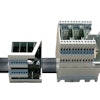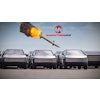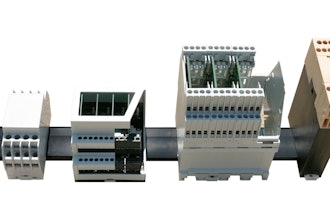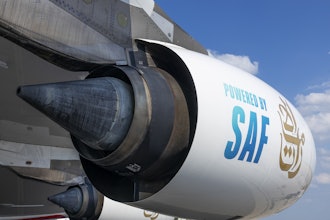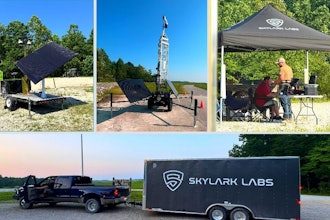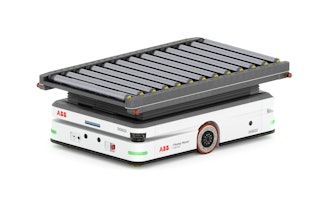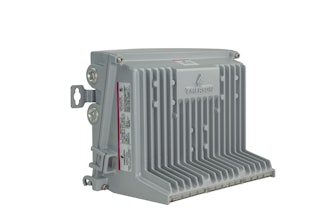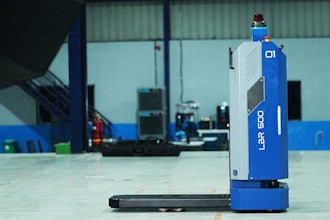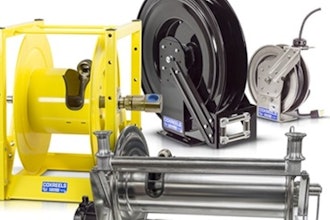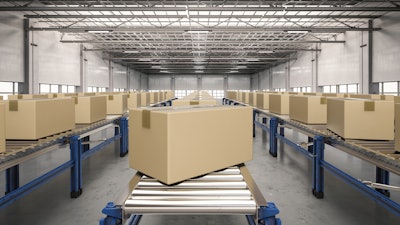
Industrial manufacturers are increasingly implementing strategies and technology to centralize disparate systems and create efficient and streamlined operations. Integrating barcode labeling can be a crucial part in your supply chain to keep your business running smoothly and efficiently.
Integration is the interconnection of disparate software applications to enhance functionality and improve results. System integration is beneficial because data that is typically included on a label comes from various areas of the business. Output from one area of the system, whether it be financial, inventory, production, or other data, can be imported into or embedded in another application.
An integrated labeling solution offers many benefits; businesses that are fully integrated can capitalize on the Return on Investment (ROI) of their overarching solutions and gain efficiency in production. In a recent poll to manufacturers across industries, over 50 percent of respondents indicated they needed to interact with more than four systems. Disparate systems impact labeling by adding unnecessary complexity that increases inefficiencies and errors.
Barcode labeling is a critical piece of an organization’s technology environment to ensure that products get out the door efficiently and seamlessly. Disparate systems throughout a technology environment can negatively impact operations due to manual data entry causing unnecessary errors, producing waste, and an unproductive user experience. Eliminating interactions with these disparate systems can reduce manual errors, save time by increasing production capacity, and unify the user experience with the same look and feel as your ERP system.
Benefits of ERP-Driven Labeling
A properly integrated technology environment’s main goal should be to print labels in as few clicks as possible while minimizing errors. This can be done with a few different methods.
Integrating your printing interface with your ERP system eliminates manual entry of label data and is efficient for companies with a small number of products.
Using data from an existing business system to drive a printing interface eliminates manual entry of almost all data and prints all necessary labels in one step. When a third party is printing labels, utilizing a separate printing interface can be beneficial.
Printing directly out of an ERP system, such as SAP and Oracle, and not interacting with the print interface eliminates the process of File, Open, Print, and Pray. Decreasing errors, increasing efficiency, and revenue growth are things businesses strive for and can be achievable with integration.
An integrated labeling solution can simplify processes for various users throughout an organization. When a labeling environment is configured to pull variable data into a single label template, it simplifies the management of label files for administrators by reducing the number of files that are stored in the system. As the information is pulled directly from other business systems, opposed to being manually entered by a user, the accuracy of data is improved.
By generating print-time data directly from an ERP system, users are eliminating the need to manually enter critical data. Less manual data entry means less opportunity for mistakes. Because an existing ERP system already holds the necessary data needed to be printed on labels, integrating can systematically send the correct data to the right label template at the exact right time. Integration helps increase efficiency and improve accuracy by allowing organizations to automate various aspects of the labeling process.
An integrated labeling solution helps expand ROI by leveraging existing systems rather than allocating budget on a new solution. Utilizing existing infrastructure and building a labeling solution into it allows leveraging historical data to create a broad picture of operations. When a system is integrated, sharing information for disparate teams is seamless and daily usage is simplified through unified workflows & single sign-in technology.
ERP Integration Use Case
Flex Strut, a US-based manufacturer of metal strut channel framing, was looking to automate its labeling processes and eliminate bottlenecks resulting from manual operations. They needed a solution that could eliminate human error and improve labeling efficiency. Implementing an integrated label printing automation solution increased their labeling accuracy by 25 percent and eliminated labeling bottlenecks, resulting in a 100 percent increase in label printing speed.
The ideal labeling software for integration should include:
- An off-the-shelf solution to align with SAP, Oracle, or another business system to reduce manual interaction and make labeling more efficient.
- Easily configurable to align with current processes to allow for features developed based on customer feedback and business needs.
- Ability to be implemented quickly and allow for scalability, growing with a business and adjusting to support new technology.
- Integration with native printer drivers can eliminate manual steps and reduce errors and comes equipped to translate barcode labeling software to printer.
A fully integrated labeling solution can transform an organization’s business. It can help save time, reduce manual steps, and improve ROI.
Nick Recht is an Enterprise Product Manager at TEKLYNX International. To learn more about the company, contact TEKLYNX in your region.

